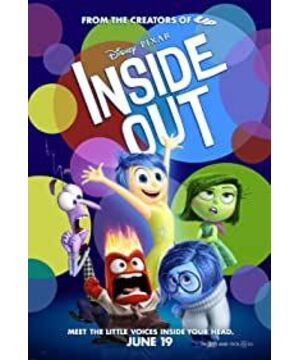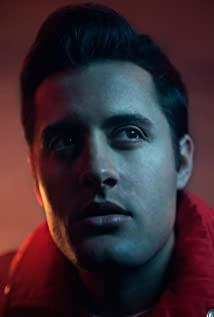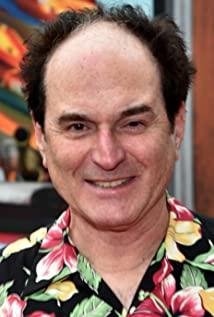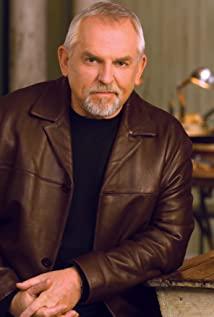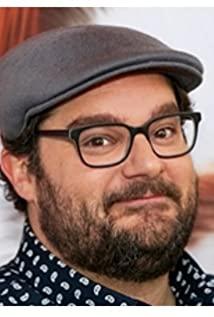—————————————— Gorgeous dividing line——————————
The "Brain Secret Service", which is currently being screened, is an excellent cartoon that Pixar has sharpened its sword in five years. It not only makes us laugh and tears in the process of watching the movie, but also popularizes psychology knowledge by the way. What's even more powerful is that the film uses very abstract psychological knowledge to make it playful and sensible. Memories, subconscious minds, dreams, things that psychologists have not fully understood, appear in a brand-new, concrete appearance in "Mind Agents".
In fact, when we look back at the movie and walk along the above Riley's mind map again, we will suddenly find that this cartoon is too simple!
Let's start with two basic concepts, one is emotion and the other is memory. They are the basis for the development of the story of "Mind Agents".
Five basic emotions.
According to the Chinese, "Brain Agents" anthropomorphizes the emotions of people-happy, worry, disgust, fear, and anger, corresponding to the five literal meanings. Basic emotions. But think about it carefully, these five emotions seem to be unable to cover the needs of our daily lives. For example, when your buddy suddenly confesses to you, most people’s first emotional reaction...should be surprised (of course, maybe there are The person will be Lele or Fear). Therefore, it can be seen that the main creative personnel have made certain choices in the creative theory. Perhaps the five basic emotions can be more close to the children's psychology.
Pull back!
The theoretical basis of the film comes from the well-known American emotional psychologist Robert Pruczek, who believes that humans have 8 basic emotions, and they are two opposites: happiness and sadness, anger and fear, trust and disgust, expectation With surprise. But regarding the basic emotions, the industry has not reached a conclusion. According to Paul Ekman, the psychology consultant of "Brain Agents", in addition to the five basic emotions in the film, there are contempt and surprise. His basis is that these 7 emotions have corresponding facial expressions that everyone agrees with (facial paralysis is the first to express dissatisfaction).
BTW, Paul Ekman has a good background. He is the prototype of the male protagonist in the American TV series "Don't Lie to Me". He judges the inner emotions of people through facial expressions to distinguish whether they are lying. In the end, "Mind" chose these five types, still in order to simplify the complexity. "These five are enough for us to tell the story." Director Peter Dougert knew what he wanted.
From the content point of view: In the movie, the five emotions in the mind of the 11-year-old girl, Riley, all play their own roles. For example, I am afraid of helping her stay away from danger, tired of letting her avoid "harm", and worrying plays a vital function in the film. After the story is told, it suddenly becomes clear that blind optimism cannot solve all problems. Sometimes, we need the intervention of negative emotions. ——("You cry, you will be well when you cry" is your testimony to this sentence?)
From the performance approach:
(1) How does the movie concretize the emotional impact on people. The main creative staff cleverly introduced a console, and also showed emotional growth by the way. (At the end of the movie, Riley’s brain headquarters is like her mother, and each emotion has its own interface.)
At the beginning, only one emotion can operate the console. At the end of the movie, as Riley’s mind matures, the console expands , Every emotion has its own interface. The simultaneous operation of multiple emotions can give rise to more complex emotions, such as embarrassment, shame, guilt, pride, etc.
(2) How to realize memory. Compared with the anthropomorphization of emotions, how to show how a more abstract memory works in the human brain is a greater challenge. Let's take a look at how "Brain Agents" is presented perfectly.
In the movie, Riley generates a memory, and the brain headquarters generates a crystal ball; memory has its dominant emotions, so the crystal ball has colors corresponding to the emotions. Dad feeds little Lily to broccoli. The villain is tired of mastering, and produces a memory ball whose color is green.
The headquarters of the villain (corresponding to the amygdala in the human brain) receives a large number of emotionally colored memory balls every day. These memory balls correspond to short-term memory.
At night, after Riley falls asleep, all the memory balls will be sent to the storage room (corresponding to the hippocampal gyrus and surrounding brain areas in the human brain) through a vacuum tube, and become long-term memories. The storage room stores a large number of colorful memory balls, like a maze composed of gyri and sulci. This is a very clever treatment, because, in fact, sleep is precisely helpful in the processing of long-term memory.
When you think about this memory in the future, the corresponding memory ball in the storage room will be sent back to the headquarters. The villain can watch this "video" through projection. Simply put, it is remembered.
In addition, there are dedicated staff to clean up the storage room, and those useless memory balls will be thrown into a place like a garbage dump. However, most of the memory balls just wade there quietly, and they will slowly disappear after too long. This process is known as "forgetting".
When the film deals with the relationship between emotion and memory, it is both visually intuitive and scientifically based. When you touch a memory ball dominated by Lele, its color will gradually become blue. This reflects the fact that memory is unstable: when you recall a certain period of the past, such as your first love, you can feel happy (that's the first love!), or you can feel a little sad (sorry, the first love has nothing to do with you).
Similarly, memory can in turn affect people's emotions. For example, Lele often recalls the long-term memory ball in the storage room to make Riley happy again.
However, there does not seem to be the concept of core memory in the film in psychology. The core memory ball in the movie, shining with golden light, has a pivotal weight and can affect a person's character. In fact, this is nothing more than a memory with a relatively strong emotional intensity. It may explain how the complex comes from, as well as the common saying in ancient Chinese that people who are close to Zhu are red and black are black.
In addition, character islands do not exist. In order to show that each core memory will strengthen one aspect of Riley’s personality, the main creator created an intuitive character island. Riley has family islands, friendship islands, hockey islands, funny islands, honesty islands, etc., which exist like theme parks. (Alternative means that your circle of friends has a deep influence on you).
Those who have seen it know that the main story of the whole movie is the journey of Lele and Worry after being accidentally launched into the storage room of long-term memory, overcoming difficulties and obstacles, and returning to the headquarters of the mind. During this journey, they mistakenly broke into various areas in Riley's mind, and got acquainted with the most important character in the film-Fantasy Partner: Popsicle.
The place of imagination (I always think this is the most important ability for children in Western countries, but China rarely pays attention to it)
Popsicles are a frequent visitor here, almost regarded as the mayor. This is indeed the case, because it is Riley itself. Imagination.
Before entering this magical paradise, let's take a look at the composition of Mr. Mayor.
Its body is cotton candy, has a cat’s tail and an elephant’s nose, as well as some dolphin genes (which can imitate the ultrasonic sound of a dolphin). It has bright colors and a lively character. The tears that come out of crying are all kinds of candies...In short, there are elements that children love.
This magical combination comes from Riley's childhood fantasy. I don't know how many children in China will imagine a playmate in their minds, but this situation seems to be quite common in foreign countries, especially in the United States.
Psychologist Marjorie Taylor of the University of Oregon and Stephanie Carlson of the University of Washington published a paper in Developmental Psychology, stating that 65% of children under the age of 7 have had at least one "fantasy friend." The youngest daughter Kris in the veteran American drama "The Troubles of Growing Up" also has a fantasy friend "Mike Mouse".
Taylor and Carlson’s research shows that children who accompany “fantasy friends” tend to be better than their peers. They usually have stronger verbal skills and are better at understanding the opinions of others. Earlier research also showed that children with "fantasy friends" may have above-average IQs, be more creative, and socialize.
However, this kind of "fantasy friend" usually "leaves" when the child is in his teens. In order to save Lele, the popsicle in "Mind Agents" chose to stay in the Forgotten Valley and was wiped out, implying that Riley bid farewell to his childhood self and became the biggest tear point in the film.
Back to the land of imagination, let's take a look at what is in the heads of American children. Oh yes, French fries! Fries with delicious gloss! Look carefully at the ground here is still a variety of trophies and medals composed of puzzles. The most conspicuous one looks like the Ballon d'Or. This French-originated award has now become one of the most influential football awards in the world. The one with two big ears on the right side of the goal is obviously a Champions League trophy. Why did Riley, who played ice hockey as a child, have so many football trophies in his mind? This is because the movie is divided into two versions, ice hockey and football, and the football version released in China.
In the
second half of the magical Yunduo Town movie, Mrs. Baiyun reported to the police that her wife had been knocked apart. When the two policemen questioned, Lele happened to rush over and knocked Mrs. Baiyun apart. One of the policemen (Jack ) Angrily called Lele back. Another police officer said, "Forget it, Jack, this is Baiyun Town."
This sentence was a tribute to the classic line of the 1974 movie "Chinatown": "Forget it, Jack, this is Chinatown."
And the scene of Youyou crying on the clouds is a tribute to Pixar's previous short film "The Violent Cloud and the Stork" (highly recommended). There are three kinds of cards on the screen of the
Magma River (Dangerous and Exciting)
House of Cards (not the White House)
. They are K, Q and R. Take a look at the face above. Haha, isn't K the father? Q is mom
and R is Riley (the initials of Riley). And on the back of the whole deck of cards is also written R, it really is Riley's country here.
Take a closer look, the box in the distance also hides the clown fish Nemo from Finding Nemo as an Easter egg, and below it is Pixar’s next work, The Good Dinosaur.的volt line.
Of course, the girl Riley also has an imaginary boyfriend.
I have to say that Riley is a typical American girl. Her imaginary boyfriend is Justin Bieber (Canadian singer). In order to reinforce this question, the screenwriter added a line to him: "I live in Canada." But in terms of his hairstyle, he is more like Harry Styles of One Direction.
The world of preschool education
is close to the place of imagination, and the interior style is also very similar. However, because the memory here is closer to Riley, who is currently 11 years old and undergoing tremendous changes in his environment and mentality, when Popsicles and the others came here, many facilities began to collapse.
There are the dismantled cookie castle, the smashed princess Dreamland (does it look like Disney’s iconic building-Sleeping Princess Castle, the same?), the collapsed plush toy hall of fame (the poor bear statue) His head is torn. This memory comes from when Riley was very young) and the Rainbow Rocket that was pushed down the Forgotten Valley as garbage. Without it, the popsicle would no longer be able to take Riley to the moon.
The thinking train
has gone through various collapses and collapses in Riley's brain. Lele, Youyou and Riley’s fantasy friends Popsicle finally got on the thinking train, and the way home is near! The Mind Train is an electric freight car that shuttles through Riley's mind and heads to Mind's headquarters. It runs with sparks. There is no fixed track, and the mind is free to go.
The products loaded on the Mind Train include daydreams and small boxes printed with "facts" and "viewpoints". In the film, the excited Lele accidentally knocked over these boxes and found that these "facts" and "views" looked the same. This may be to show that Riley's thinking is still at a relatively simple stage, or it may be used to Point out that people often confuse "facts" with "viewpoints."
However, it didn’t take long for Riley to fall asleep, all the brain adventures stopped working, and the thinking train stopped working, only dreaming... (Who said that there is no thinking activity when sleeping...)
Abstract thinking In the
movie, the popsicle leads Lele and Youyou to take a shortcut to ride the thinking train. The so-called "shortcut" is to pass through the room of abstract thinking. When they happened to meet Riley's need to deal with the abstract concept of "loneliness", they were abstracted into four stages in the room, and they almost couldn't get out.
The door of the room says "Danger! No entry!"
Stage 1: When abstract
thinking starts to work, they become rough 3D geometric blocks, which look like Picasso's paintings.
The second stage: Deconstruction (Deconstruction) The
three bodies begin to separate. Youyou also kicked her head away (the creator’s sense of humor~).
The third stage: Two-Dimensionalization
Then, they became a two-dimensional plane image.
The fourth stage: Loss of shape (Non-Figurativity) The
final stage, they lose complex shapes and become geometric figures of a single color.
The three characters are simplified into prototypes. Lele is a star-shaped spark, worry is a teardrop, and a popsicle is an elephant (nose). The witty worries reminded everyone to lie flat, turning into a line and passing through the door.
Thinking is a high-level cognitive activity possessed by human beings. The basic process includes analysis, synthesis, comparison, classification, abstraction and generalization, etc. Abstraction is the thinking process of extracting concrete images and deriving the common and essential characteristics of similar things. For example, apples, citruses, bananas, and pineapples are concrete, and "fruit" is an abstract concept.
Child psychologist Piaget divides children's cognitive development into four stages. He believes that children begin to enter the Formal Operational Stage (Formal Operational Stage) at the age of 11 and begin to have the ability of abstract thinking and logical reasoning. In the movie, Riley was just 11 years old, and his abstract thinking ability had just been activated, so the popsicle said that he had been here many times before and had never encountered any danger.
DreamWorks
Regarding dreams, Freud’s "Analysis of Dreams" has already said a lot, but dreaming has always been the most mysterious area of anthropological research. This time Pixar’s brain adventure, naturally, it is necessary to have a look at dreams. Brains are wide open. In the movie, the production place of Dreamland is located deep in the brain. It is an independent studio, like a Hollywood movie studio. You can see busy staff, various shooting equipment, posters, and movie props as soon as you enter the door.
High-energy warning, where there are many Easter eggs:
you can bump into movie stars everywhere, and the expressions of the little fans when they see the rainbow unicorn reveal the hearts of many fans.
Although human research on dreams is still inconclusive, one argument that has received most recognition is that dreams are closely related to reality. In the movie, the production of dreams is almost in the making of the movie. Memories are the material. The writer of the script is Riley herself. After that, the little people are on the battlefield, the makeup release scenes begin to perform, oh yes, there are the most important props— —Reality distortion filter, such an anti-sky function also implies the absurdity of dreams.
Powerful dreams also have a wake-up function, such as waking up from a nightmare.
All of this is made into a movie and delivered to the headquarters. It is controlled by the emotional little people, which is the so-called "Dream Watch", and you can pinch it off when you encounter a nightmare (is it a violation).
Generally speaking, the film reproduces the whole process of dreaming with a very vivid metaphor. However, in a sense, this is just a kind of conjecture and basic understanding of humans about dreams. The domain of dreams is too complicated. We have almost nothing about dreaming. Don't even know, why do you dream? What caused our dreams? Is everything in the dreams for a reason? Why do dreams have the energy to break sleep? …Uh, none of these have clear answers yet, but the answer from "Mind Agents" is very interesting. Maybe the little guy in your head is already thinking, what dreams will he have tonight?
In the subconscious
film, the subconscious mind is located in the depths of DreamWorks. Inside the gates of the two security guards, Riley's darkest and lingering memories are hidden. "They bring all the troublemakers here." For
example, the boring prototype cauliflower (which is also a nightmare for many children)
grandmother's vacuum cleaner
These memories of the terrible clown became number XXXL, and the impact on the brain was earthquake-magnitude when it was released.
The film shows a part of the subconscious-things that people are afraid of deep in their hearts.
We have not yet explored the world of dreams, and know very little about the subconscious. The most complete subconscious theory so far still comes from Freud, the founder of psychoanalysis. According to his hypothesis, people generally believe that the subconscious refers to those things that cannot become conscious under normal circumstances. It is active and actively exerts an influence on a person’s character and behavior. It reflects a person’s "self", and dreams are among them. A subconscious manifestation.
Freud also put forward the iceberg theory, pointing out that the composition of human consciousness is like an iceberg. The consciousness that is out of the water is only a small part, but most of the unconscious (subconscious) hidden underwater has an impact on the rest.
In the movie, we also only saw a small part of the subconscious, and more abyssal areas have yet to be explored. In short, this is a rare film (all children can understand independently are geniuses), whether it is the content of the film, the performance of the film, and the various information he conveys about education, psychology, etc., it is especially suitable Parents with children between the ages of 5-13 and their children watch it together!
View more about Inside Out reviews


